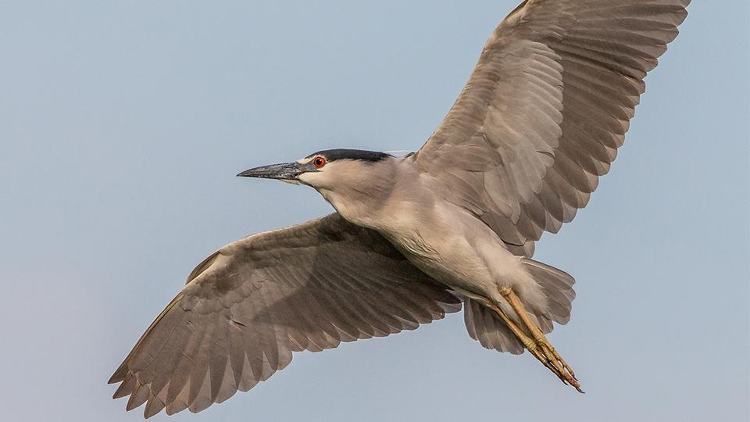The Challenge
Raptors (e.g. hawks, owls, falcons) are large, charismatic bird species at the top of the food chain. They experienced human-driven population crashes during the 19th and 20th centuries. While a subset of these species has recovered in the Los Angeles region, others have not — and are intolerant of urbanization and other human activities. To help these species survive, it is critical to identify various factors, such as how well they can tolerate urbanization, as well as their historical and current habitats and nesting areas for future conservation practices. Nesting areas of raptors are also important indicators of ecosystem health in urban areas like the Los Angeles region.
Several government agencies, developers and nonprofit organizations collect data on urban-nesting raptors around the Los Angeles Basin, but these efforts are not well-coordinated. If this information can be consolidated, it will be useful to creating management tools like maps and databases that can help guide local policy and land-use decisions.
The Solution
To help enhance human coexistence with nesting raptors in urban ecosystems within Los Angeles County, researchers generated a master database and a series of maps. For their urban cover analysis, they focused on the four most common raptor species in the Upper Malibu Creek Watershed: Red-tailed Hawks, Red-shouldered Hawks, Cooper’s Hawks and American Kestrels. For their analysis on life history of birds and behavioral traits associated with urbanization, they focused on 52 different breeding bird species in the entire Los Angeles Basin. Their research findings will help identify future research needs, particularly for species that may be extremely sensitive to urbanization but are not well-known.
Results
- The project resulted in the development of the largest master database for Los Angeles County’s nesting raptors from 1971 to 2018, which systematically maps the location of nests of these species in the region for the first time.
- The amount of urban cover (%) around nest sites increased during three discrete time periods spanning five decades (1971–2018) for Red-tailed, Red-shouldered, and Cooper’s Hawks. This was not the case for American Kestrels, which were confined to the least-urban areas. Cooper’s Hawks appear to now be selecting urban nest sites over wildland sites, based on the increase in surrounding urban cover, even though landscape urbanization has not substantially changed during the last two time periods.
- Comparisons of two datasets of bird sightings (1995-1999 vs. 2012-2016) from the Los Angeles Basin found that two specific traits are significantly associated with urbanization in both eras. Structure nesting—the tendency to build nests on human-built structures—was positively associated while cavity nesting—the tendency to build nests in natural tree cavities—was negatively associated with urbanization.
Next Steps
The development and maintenance of regional nesting databases starting with raptors will highlight key areas for future conservation given the projected changes in the human population and landscape in Los Angeles County.
Additional Outcomes to Date
Dan Cooper has received additional funding from various sources to inform his research to build on this SLAGC-funded study. Sources of funding include Friends of Griffith Park and UCLA La Kretz Center Graduate Research and Stunt Ranch Reserve Combined Grant.
Publications and Reports
Cooper, D. S., Yeh, P. J., & Blumstein, D. T. (2020). Tolerance and avoidance of urban cover in a southern california suburban raptor community over five decades. Urban Ecosystems, doi:10.1007/s11252-020-01035-w
Cooper, D. S., Shultz, A. J., & Blumstein, D. T. (2020). Temporally separated data sets reveal similar traits of birds persisting in a united states megacity. Frontiers in Ecology and Evolution, 8 doi:10.3389/fevo.2020.00251

Topics
Research Team
Daniel Blumstein (PI)
Ecology & Evolutionary Biology, Life Sciences
Institute of the Environment & Sustainability, Center for Tropical Research
marmots@ucla.edu
Pamela Yeh
Ecology & Evolutionary Biology, Life Sciences
pamelayeh@ucla.edu




